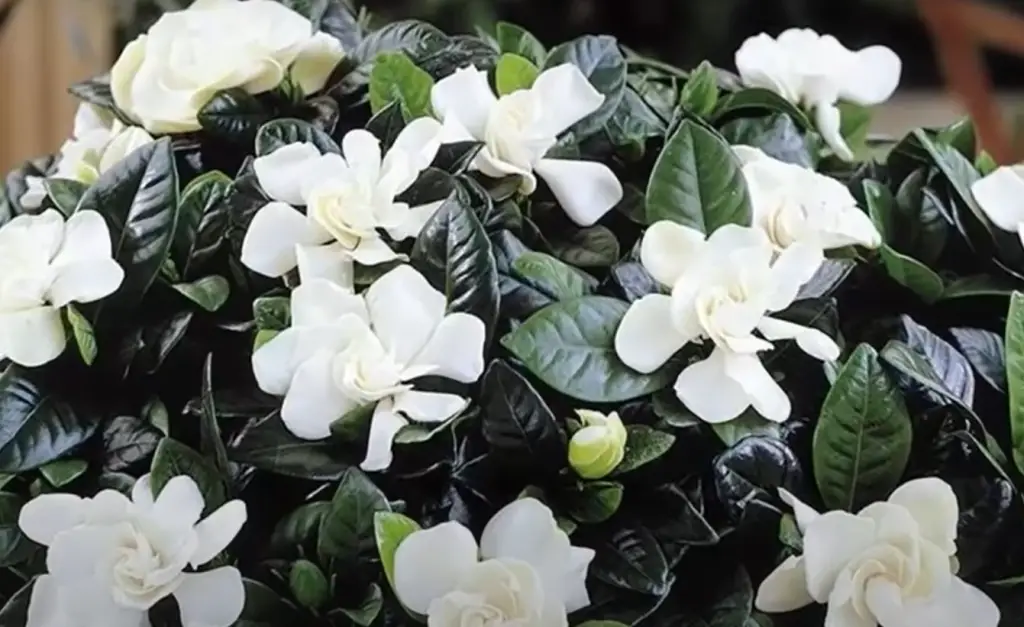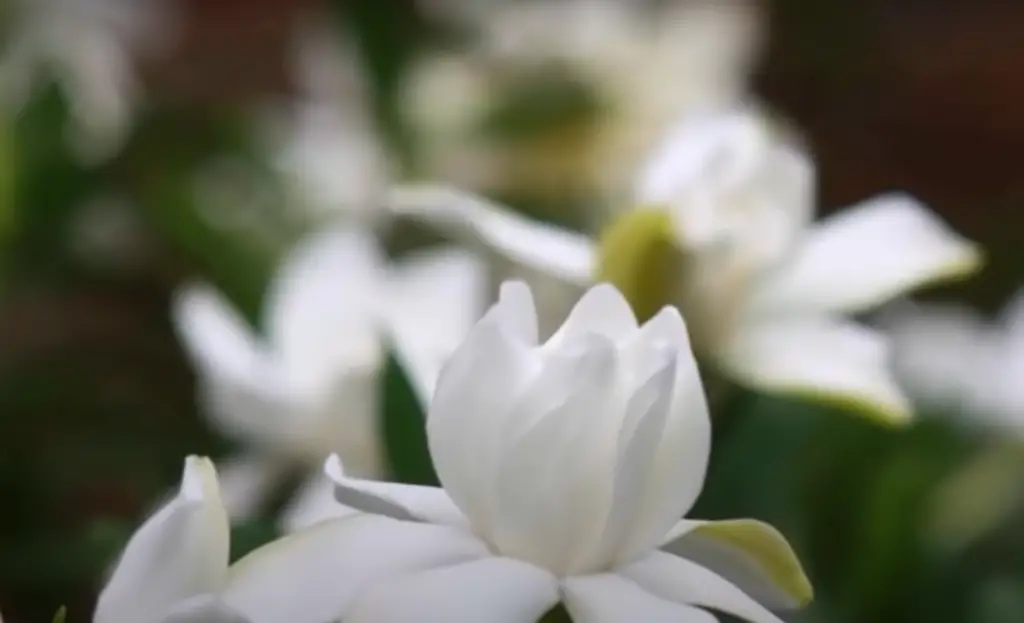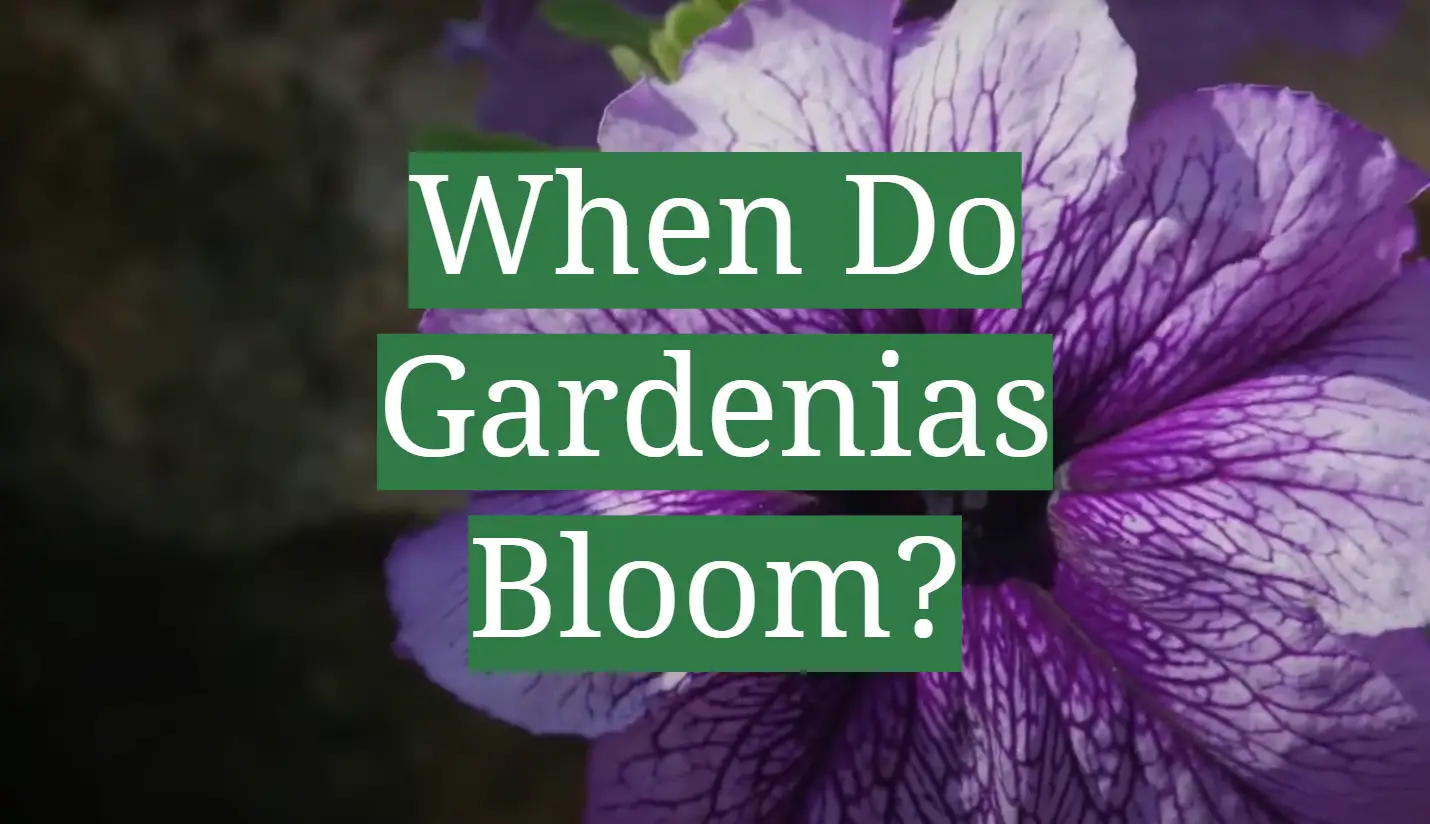Gardenias are a symbol of beauty and warmth, with their lush green foliage and fragrant blossoms that can provide a stunning addition to any garden. Have you ever wanted to add gardenias to your outdoor space but weren’t sure when the blooming season begins? We’re here to tell you all about when gardenias bloom so you can be prepared for their magical arrival!
When Gardenias Are in Bloom?
Gardenias are one of the most popular flowering plants, and their fragrant white blooms can bring a sweet scent to any outdoor space. Gardenias typically bloom from late spring to fall with their peak flowering season occurring in midsummer. The exact timing of gardenia bloom varies greatly depending on where you live, so it’s important to understand when gardenias tend to flower in your area before planting them.
In southern climates, gardenias start to flower as early as April or May and continue blooming until October or November. In areas with milder winters, such as the southeastern United States, some varieties may even bloom year-round. In cooler regions with harsher winter conditions, gardenia blooms usually arrive in June or July and last until September or October. [1]

Gardenias are slow to flower after they’re planted, but you can expect to see your first blooms as early as the second year from when the plants were established. Gardenias require consistently warm temperatures and plenty of sunlight to reach their peak bloom, so be sure to give them a sunny spot that gets at least 6 hours of direct sunlight each day. If you want your gardenias to produce more blooms, make sure to fertilize regularly throughout the growing season using an acidic fertilizer with high levels of magnesium sulfate (Epsom salt).
Gardenias can be the perfect addition to any garden or outdoor space, and with a bit of knowledge and preparation, you’ll have beautiful blooms in no time. So, take some time to research when gardenias bloom near you and plan accordingly if you want your garden to be filled with vibrant white flowers this season!
Caring for Gardenias Outdoors
Gardenias need plenty of sun, well-drained soil and regular watering. In order for gardenias to bloom, they require 6 to 8 hours of full sun each day during the blooming season. They also thrive in acidic soil with a pH range between 4.5 and 6.0. Regular fertilizing can help keep their soil adequately acidified. Gardenias need consistent moisture in order to stay healthy and flower, so it is important to water them at least once a week throughout the growing season, especially during dry periods or drought conditions. Mulching around the plants can help conserve moisture and keep weeds from competing for nutrients with gardenias’ shallow root systems. Finally, pruning away dead branches helps gardenias bloom more abundantly.
By providing gardenias with the proper care and conditions, you can ensure that they will bloom throughout the season.
Caring for Gardenias Indoors
Gardenias are tropical plants and generally do best when grown outdoors. But with care, gardenias can be successfully grown indoors as well. With the proper amount of light, humidity, temperature, and water; indoor gardenias may even bloom all year long!

For optimal growth, make sure your gardenia is kept in bright indirect sunlight during the day. Gardenias should not be placed in direct sunlight or they will likely dry out too quickly and suffer from sunburn. It’s also important to keep temperatures around 70-75 degrees Fahrenheit during the day and no lower than 60 degrees at night.
Humidity levels for successful indoor gardening with a gardenia should be kept between 40-50%. This can easily be achieved by placing a humidifier near your plant or misting it lightly every few days.
When it comes to watering, indoor gardenias should be watered when the soil feels dry to the touch, and not before. Over-watering can be just as deadly as under-watering, so make sure you don’t water too frequently. If the leaves of your plant are wilting or turning yellow, this could indicate that you’re either over-watering or not giving enough humidity.
How to Encourage Gardenia Blooms
Gardenias are beautiful, fragrant flowers that can add a stunning accent to any garden. To keep your Gardenia blooming and thriving, there are several steps you should take:
- Plant the Gardenia in well-drained soil and in a sunny location. Gardenias need at least four hours of sunlight each day to bloom.
- Water regularly during dry periods, but avoid overwatering as it can cause roots to rot. Keep the soil moist but not wet.
- Feed the plant with fertilizer once every two weeks throughout spring and summer for optimal flower production.
- Use a balanced fertilizer for acid-loving plants like Gardenias.
- Prune away wilted or dead flowers as well as leaves and stems. This will help promote a full, healthy bloom.
- Mulch around the Gardenia to protect its roots from extreme temperatures and retain moisture in the soil. [2]
Following these steps will ensure your Gardenia blooms at its best for years to come! Good luck with your gardening endeavors!
Tips for Longer Lasting Gardenia Blooms
Gardenias are prized for their fragrant white blooms which can last anywhere from a few days to several weeks, depending on the care they receive. Here are some tips to keep your gardenia blooms looking beautiful and long-lasting.
Water Them
Gardenias require a lot of moisture, and their soil should remain consistently moist. But be careful not to overwater or flood them, as this can lead to root rot and other issues that can stunt blooming. Wait until the top 2 inches of soil have dried before watering again.

Water gardenias from beneath the foliage with a slow-running hose or pour water at the base of each plant for even distribution.
Use Mulch
Mulch is a great way to help gardenias bloom. It works by insulating the soil, keeping it at an even temperature and improving drainage. Applying mulch around the base of the plant helps retain moisture and reduce evaporation. Additionally, it breaks down over time and adds valuable nutrients to the soil that can be absorbed through the roots of gardenias. Organic mulches are ideal for gardenias as they provide better water retention and aeration than inorganic materials such as plastic or rock mulch.
Make sure to leave some space around the stem so that air can still circulate properly and the water can drain away.Prune at the Right Time
Gardenias need to be pruned in order for them to bloom. The best time to do this is spring and summer while they are still actively growing. Pruning in the fall or winter may shock the plant and cause it to stop blooming. When pruning gardenias, you should always remove dead or diseased branches first, then shape the remaining branches by cutting back any that have grown too long. This will help ensure that the shrub remains healthy and continues to produce vibrant blooms year after year.
Deadhead
To keep gardenias blooming throughout the season, it’s important to deadhead flowers regularly. In late spring and summer, when gardenias are in bloom, use pruning shears or scissors to snip off spent blossoms. Deadheading removes flowers that have already faded so that new buds can develop. It also promotes a more compact shape by preventing long leggy growth. When cut back properly, you should start to see new flower buds form within two weeks of deadheading. Be careful not to cut too far down into the stem as this could damage the plant and prevent future blooms from forming.
Get the Exposure Right
One of the most important considerations when it comes to When Do Gardenias Bloom is exposure. The right exposure can mean the difference between a healthy plant and one that never blooms. Gardenias need to be in an area with ample sunlight for at least four to six hours each day. Too much direct sunshine will cause damage, so make sure your gardenia is in a partially shaded area such as beneath a tree or some other kind of cover.
Give Them Some Humidity
Gardenias thrive in humid climates. Their natural habitats are tropical and subtropical regions, so it’s important to recreate that feeling of warmth and moisture if you’re trying to grow them outside your region. If possible, keep the plant indoors during colder temperatures.

Mist the leaves regularly or use a humidifier nearby for best results. It also helps to group together gardenias with other plants that need humidity, like ferns or begonias. Doing this will help all of your plants stay healthy as they share the same environment. Additionally, don’t forget to water your gardenia often- about once every week to keep the humidity levels up. With proper watering and humidity levels, you can ensure that your Gardenia is happy and will continue to bloom throughout the year.
Fertilize
Gardenias need to be fertilized every month in order to promote the best blooms. Fertilizers with nitrogen, phosphorus, and potassium will help encourage vigorous growth and large flowers. A balanced fertilizer like 10-10-10 or a specialized gardenia fertilizer should be used for the best results. The amount of fertilizer required will depend on the size of your gardenia bush, but it is important not to over fertilize as this can cause leaf yellowing and reduce flowering. Applying a slow release fertilizer in April or May is recommended for gardenias that are planted outdoors. Indoor plants can benefit from granular or liquid fertilizers applied throughout the growing season.
Additionally, soil that is slightly acidic (pH 5.5 to 6.5) will help your gardenia bloom profusely. Adding an acidifying fertilizer or adjusting your soil with peat moss or sulfur can help create the ideal pH balance for your gardenias.
Watering is another important factor in promoting the best blooms for a gardenia bush. Gardenias should be watered deeply and regularly as they are prone to wilting in dry conditions. Check the soil moisture before watering by inserting a finger about two inches into the ground, if it feels moist then wait until it becomes dry before watering again. Watering thoroughly every other day during hot weather will ensure that your gardenias get enough water without becoming over-saturated and preventing oxygen from reaching the roots.
Finally, removing spent flowers will help encourage new blooms in your gardenia bush. Make sure to pluck off faded flowers as soon as they appear to prevent them from taking up essential energy and nutrients that could be used for producing additional blossoms. With the right care and attention, you can enjoy a beautiful display of fragrant gardenia blooms throughout the summer months.
Lower the pH
Gardenias prefer slightly acidic soil with pH levels ranging between 5.0 and 6.5. If your soil is not naturally acidic, you can lower its pH by incorporating organic matter like coffee grounds, compost, peat moss or sulfur into it. This will help to increase the acidity of your soil and make it more hospitable for gardenia growth.
Use Pickle Juice
Gardenias are known for their blooms. While fertilizer, soil quality, and the amount of sunlight it receives all play a role in how much your gardenia will bloom, you can also help promote flowering by using pickle juice. Pickle juice contains nitrogen and other essential nutrients that will help stimulate growth.

To use pickle juice on your gardenia, simply mix three tablespoons of pickle juice into one gallon of water and pour it over your plant’s root system every two weeks during the growing season. This should encourage more blooms throughout the year!
Use Epsom Salt
Epsom salt has been known to help gardenias bloom better and longer. To apply Epsom salt, mix 2 tablespoons of Epsom salt in 1 gallon of water and feed the mixture to your plants every two weeks during the growing season. Be sure not to overdo it; too much can cause leaf burn or root damage.
Try Used Coffee Grounds
Coffee grounds can be an excellent addition to the soil of your gardenias. Not only do they provide nitrogen, phosphorus, and other essential nutrients, but the acidity of the coffee helps to boost the pH levels of your soil — which is important since gardenias prefer a slightly acidic environment. Coffee grounds are also great at aerating and improving the texture of your soil, which will help your plants take in more water and nutrients.
If you plan on using used coffee grounds for your gardenias, make sure to spread them out evenly around its base and then mix it into the top layer of soil. For larger amounts, scatter 1/4 inch layers over several inches of surface area until all areas have been covered.

If you don’t already have any used grounds, you can make a large amount quickly by buying a bag of whole coffee beans and grinding them yourself. Be sure to use the finest grind setting possible for optimal results. [3]
Once you’ve added the coffee grounds to the soil of your gardenias, water it thoroughly and watch as your plants thrive in their newly-enhanced environment! With regular use of this natural fertilizer, your gardenias will be blooming in no time!
FAQ
How do I get my gardenia to bloom?
Gardenias require plenty of sunlight to bloom. Place them in an area that gets six or more hours of direct sun each day. Additionally, gardenias need an acidic soil with a pH between 4.5 and 6.0 for optimal growth and blooming. If your soil is alkaline, you may need to add sulfur as a soil amendment. Feeding your gardenia regularly with an acid-based fertilizer will help keep it healthy and encourage more blooms. Water your gardenia when the top inch of soil feels dry; this will help the plant retain moisture so the buds do not drop prematurely. Pruning dead or damaged branches can also help promote blooming on your gardenia bush.
How often does a gardenia bloom?
Most gardenias will bloom every spring and summer with peak flowering typically occurring in late May to early June. However, some varieties may be able to produce blooms throughout the year if given the right conditions. Additionally, some gardenia cultivars have been specially bred to flower more heavily than others. If you want your gardenia blooming more often, you should choose one of these varieties.
In terms of how long each bloom cycle lasts, most gardenias will start blooming in late spring or early summer and continue for the next 4-6 weeks before taking a break until the next season’s flowers come out.
How long does it take for gardenia to bloom?
Gardenias typically take around six weeks before they bloom, although some varieties may bloom sooner or later. The exact time frame depends on the variety and climate conditions — such as temperature, humidity, and sunlight — in which your gardenia is planted. To ensure optimal blooming, fertilize your gardenia every two to three weeks with a balanced fertilizer with low nitrogen levels throughout the growing season. If you live in an area that experiences cold winters, be sure to provide protection from frost for your gardenia plants during this period. When spring comes around again, you can expect your gardenias to produce beautiful blossoms once more. [5]
What season is best for gardenias?
Gardenias thrive in warm weather and do best when planted in the spring. They require plenty of sunlight, so they should be planted in a sunny spot where they will receive at least five hours of direct sunlight each day. In most areas, gardenias bloom during the late spring and early summer months, although some varieties may produce flowers a bit earlier or later depending on local weather conditions and soil composition. Once established, gardenias can continue to flower until the first frost of winter. [6]
While it is possible to grow gardenias indoors in colder climates, special care must be taken to ensure that plants receive adequate light and humidity. Gardenias kept as houseplants are likely to bloom less frequently than those grown outdoors since they typically rely on the natural light cycle to trigger flowering.
Gardenias are equal parts beautiful and fragrant, making them a great addition to any outdoor space! With proper care and planting, gardeners can look forward to watching their plants bloom each year.
Useful Video: When Do Gardenias Bloom?
Conclusion
Gardenias are beautiful, fragrant flowering shrubs that many gardeners desire in their yards. Although slightly temperamental, with the right soil and care, these bushes will reliably bloom seasonally. The blooming period of Gardenias is typically late spring to early fall. During this time, they produce sweet-smelling white or cream flowers that can last up to three weeks! With proper pruning and fertilizing practices, you can ensure your Gardenias will continue to give you years of seasonal beauty. While there is no perfect formula for when Gardenias will bloom, understanding the climate in which you live and utilizing the tips above should help you get the best results from your plants. With some patience and nurturing, watching your Gardenias come alive with blooms each season will be an experience you won’t soon forget. Good luck!
References:
- https://www.southernliving.com/garden/southern-gardening-gardenia
- https://thepracticalplanter.com/when-do-gardenias-bloom/
- https://www.allaboutgardening.com/gardenia-blooms/
- https://www.southernliving.com/garden/southern-gardening-gardenia
- https://www.jacksonandperkins.com/gardenia-gifts-care/a/care-instructions-gardenia/
- https://www.gardenia.net/guide/learn-how-to-grow-and-care-for-your-gardenia










Leave a Reply
View Comments